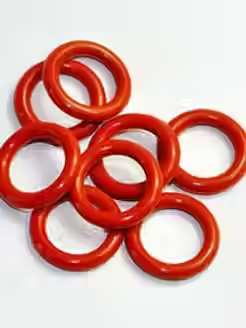What is the Difference Between Silicon and Rubber Seals for Solar Heaters? - Shakti Rubber Products
- Jaswanth srinivas
- Jul 15
- 1 min read

What is the Difference Between Silicon and Rubber Seals for Solar Heaters?
When choosing seals for solar water heaters, it’s essential to understand the difference between silicon and rubber seals. At Shakti Rubber Products, we specialize in manufacturing high-quality sealing solutions tailored for solar applications. Here’s how the two materials compare:
1. Temperature Resistance
Silicon Seals: Withstand temperatures from -60°C to +230°C, ideal for solar heaters exposed to high heat and UV.
Rubber Seals (EPDM/Nitrile): Typically resistant up to 120°C, making them less suitable for prolonged heat exposure.
2. Durability & UV Resistance
Silicon: Excellent resistance to UV rays, ozone, and weathering, ensuring a longer lifespan in outdoor solar systems.
Rubber: Prone to degradation under sunlight and ozone, leading to cracks and leaks over time.
3. Flexibility & Compression Set
Silicon: Maintains flexibility across wide temperatures; low compression set helps retain shape under pressure.
Rubber: Good flexibility at moderate temperatures, but may harden and lose shape in high-heat conditions.
4. Water Safety
Silicon: Non-toxic and food-grade options available; ideal for potable hot water systems.
Rubber: Not always suitable for drinking water unless specifically certified.
Shakti Rubber Products – Trusted Supplier for Solar Heater Seals
At Shakti Rubber Products, we manufacture both silicon and high-grade rubber seals for solar water heaters. We recommend silicon seals for better thermal stability, UV protection, and longer service life in harsh solar environments. For cost-effective indoor or low-heat uses, rubber seals can be a viable option.





Comments